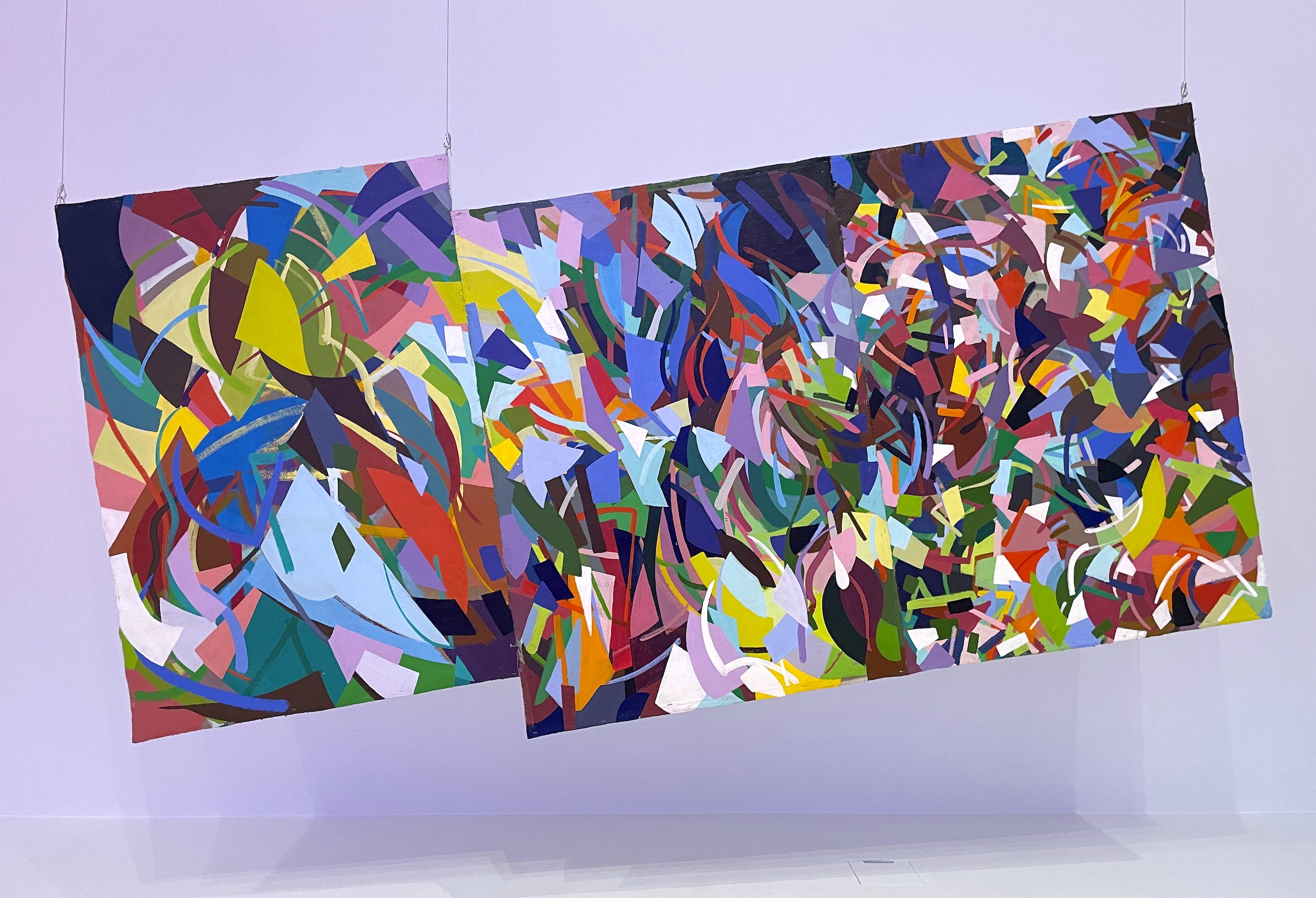EAST LANSING, Michigan — The road from Detroit to Michigan State University’s Broad Art Museum is bleak in winter. Gray permeates everything — the sky, the barren trees, the sidewalks. It was almost a sensory shock to enter Samia Halaby: Eye Witness. Taking up the entire second floor of the spacious, Zaha Hadid-designed museum, the 88-year-old artist’s abstract paintings are luxurious fields of color and form. Each one pulsates with its own energy. Some, like “Sun” (2015), are pure vibration; others, such as “Lilac Bushes” (1960), are placid, heavy with paint; others still have the buzz of a morning commute (“Mother of Pearl II,” 2013) or the grace of a ballet (“For Jean Gordon,” 1990). The angular shards of “Angels and Butterflies” (2010), dominated by blues and purples, conjure a Blue Rider-esque mountain range, while the sleek “Aluminum Steel” (1971) reflects the auto industry nearby; it called to mind the Ford River Rouge factory south of Detroit that lights up like Fritz Lang’s Metropolis at night.
The visual dynamism of Halaby’s paintings is fitting: The artist is a pioneer of Computer Art. In 1986, she got an Amiga personal computer and learned to code; from there, she transformed her works on canvas and paper into digital images, or kinetic paintings. Though the exhibition focuses largely on her hand-painted works, the largest of which almost feel like virtual worlds of their own, televisions throughout the galleries screen her digital creations, including the hypnotic kinetic paintings “Bird Dog” (1987–88) and “Land” (1988).
It’s easy to get lost in the visual stimuli and in Halaby’s artistic journey from a greater focus on form and optical illusion in the 1960s and ’70s, as well as a few examples of figuration, to jittery works that align with her kinetic paintings. Striking small watercolors and preparatory sketches in vitrines, as well as works on irregular canvases and a multicolored biomorphic papier-mâché sculpture hanging in one gallery allow visitors to meander through her creative processes and pathways. But an equally important journey has been her personal one. The MSU Broad may seem off the beaten path for an artist who has lived and worked in New York since 1976, but Eye Witness is a homecoming of sorts: Halaby received her MA from Michigan State in 1960, where she began to think seriously about painting, and taught at the University of Michigan from 1967 to ’69. Her artistic journey also charts a life one: Born in Palestine in 1936, Halaby and her family were displaced to Lebanon in 1948 and moved to the United States three years later. Through this lens, the constant activity in her abstractions starts to suggest geographic migration, whether by choice or not.
Michigan has the largest Arab and Arab-American population in the US, but art exhibitions by Arab and Muslim artists, particularly women, still aren’t as frequent as they should be, and they’re no more common in the rest of the country. In fact, a retrospective show of Halaby’s works was slated to open at the Eskenazi Museum of Art at Indiana University (where she received her MFA) this February, but it was abruptly canceled in what many, including the artist herself, saw as an act of suppression of Palestinian voices.
It’s mind-boggling that this is Halaby’s first US museum retrospective in a career that spans more than half a century. She’s a trailblazer on multiple levels; it’s time for her recognition to start a trend.








Samia Halaby: Eye Witness continues at the MSU Broad Art Museum (547 East Circle Drive, East Lansing, Michigan) through December 15. The exhibition was curated by Rachel Winter, with support from Thaís Wenstrom and Laine Lord.

